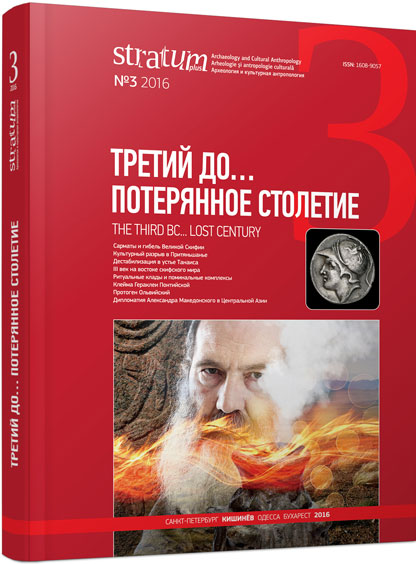Посмертные манипуляции с костями человека (данные о мумификации) у населения Центральной Азии в раннем железном веке
The Post-mortem Ritual Manipulation of Human Bones (Evidence of Mummification) Practiced by Population of Central Asia in the Early Iron Age
Author(s): Egor P. Kitov, Alexandra O. Kitova, Erden OralbaySubject(s): History, Archaeology, Cultural history, Ancient World
Published by: Издательский дом Stratum, Университет «Высшая антропологическая школа»
Keywords: Central Asia; Kazakhstan; Early Iron Age; early nomads; post-mortem ritual; perforation; trepanation; embalming; mummification
Summary/Abstract: The article deals with analysis of the human bones and skulls subjected to artificial damage which are coming from Early Iron Age cemeteries of East Kazakhstan. Analysis of the perforations on the bones of the postcranial skeleton and trepanations in the skulls makes it possible to associate them with the implementation of embalming bodies for mummification of noble members of nomadic communities in the regions of Altai and Tuva. The purpose of this tradition can be explained by the necessity for members of the tribal association to give last respects to a person of high social rank, that in a nomadic life style is not always possible within a short time. Analysis of such manipulations with the body of the deceased can significantly enhance the information on postmortem rituals and increase the area of their distribution.
Journal: Stratum plus. Археология и культурная антропология
- Issue Year: 2016
- Issue No: 3
- Page Range: 369-379
- Page Count: 11
- Language: Russian
- Content File-PDF

